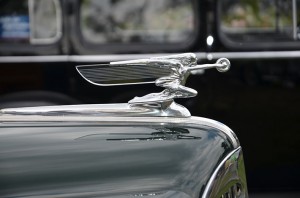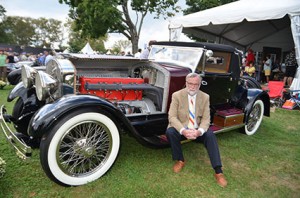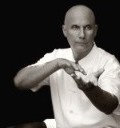
Passion for cars… from collecting to racing
“It’s my Little Deuce Coupe, you don’t know what
I got!”
“Little Deuce Coupe” by the Beach Boys, 1963, Capital Records
By Rod Karr
For many men of the Baby Boom generation what really made cars cool was the Beach Boys and Jan and Dean, those icons of the surf and car sound of the mid-60s.
It was an American Graffiti world where your girl, your car, and football (or maybe your surfboard) were the only things that mattered. Even if you never came near a hot rod or the beach, GTOs, 409s, Woodies, Deuce Coupes, and surfer girls romanticized a pre-tech world where life was simple and cruisin’ was cool. The car was the centerpiece, a symbol of freedom and individual identity and nowhere more worshiped than in 60s California.
But America’s love affair with the automobile runs much deeper than a California tan and the 1932 Ford hot rod popularized by the Beach Boys as the Little Deuce Coupe.

Peter T. Boyle’s 1929 Isotta Fraschini 8A SS Boattail Convertible Coupe LeBaron, a Concourse d’ Elegance showstopper from Pebble Beach to Radnor.
The era when hot rods ruled America’s car culture has given way to the much broader appreciation of cars as classics and encompasses every kind of vehicle from true antiques (the horseless carriage) to European sports cars to the muscle cars of the 60s and 70s. Every era, every demographic, and every philosophy contributes to the revved up world of automobiles. And car collecting has become big business, a chance to declare your status, honor the past, and beat the stock market.
For many of the most ardent collectors, the operative word is “restoration.” Find an antique (made at least 25 years ago, preferably one that’s been in grandpappy’s barn covered by an old tarp), discover that only a handful were made, and carefully restore it to its original showroom state. Oh, and along the way plan to empty your wallet and make dumb mistakes (“I didn’t like the car’s original color so I painted it red.”). But if you’re truly in it for the money and don’t know a spark plug from a carburetor, buy an already restored car and sit on it for ten years–according to one survey, well-restored classics have appreciated 395 percent in the last decade, outstripping everything but gold.
It’s not unusual for cars to fetch eight figures; for instance, the 1936 Mercedes 540 K Spezial Roadster, the most expensive car sold at the Pebble Beach Classic Car Auction in 2012, went for a cool $11.7 million. Understandably, these vehicles are bought and sold by uber-wealthy collectors who show and sell at the Holy Grail of car shows known as Concours d’Elegance: the top dozen or so congregations around the world that sometimes feature auctions and always include champagne, tuxedos, and elegant cars put on display by folks like Ralph Lauren, whose exotic, one-of-a-kind Ferraris tag him as the most successful of the high-profile celebrity owners.While authentic and costly restoration is the motive for big money collectors, the far more common lure is expressed by 60-year-old Dave Hutchison, operations manager of “Ragtops and Roadsters, Premium Restorations” out of Perkasie, Pennsylvania, who had a career in telecommunications before chucking it twelve years ago to live his passion for collecting and restoring old cars.
. . . To read the full article and many more about the passion for cars, subscribe to Healthy Aging Magazine!











